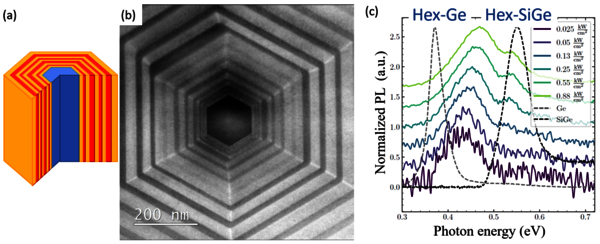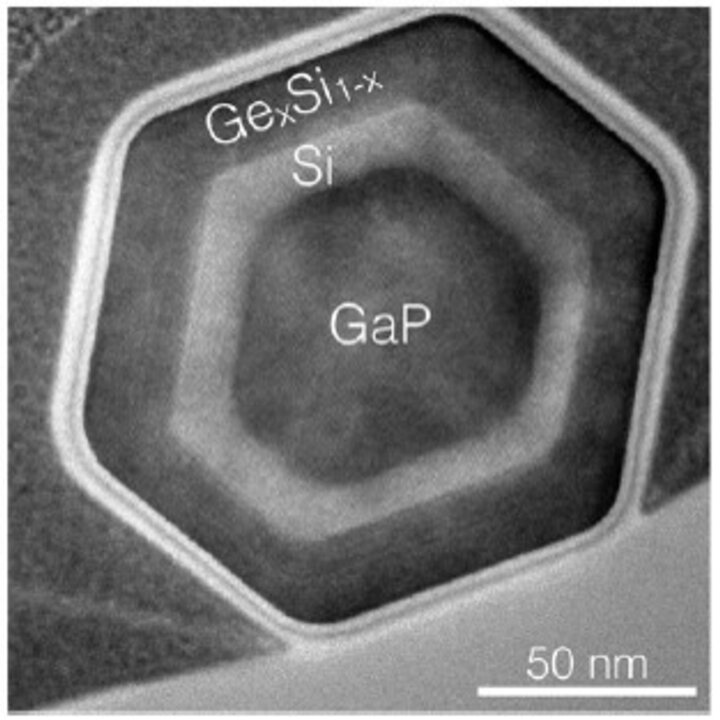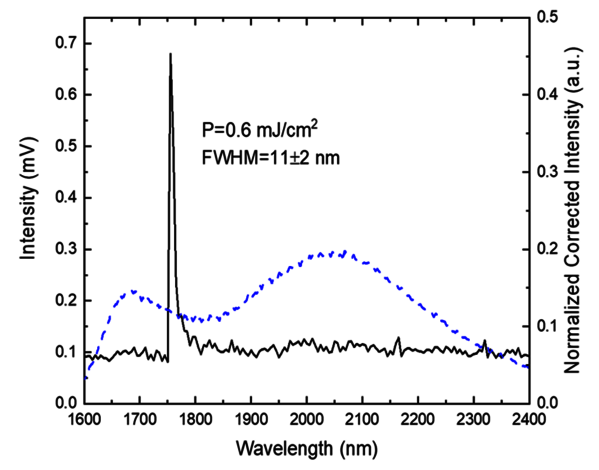Revolutionizing the Electronics Industry: Faster, Lighter, Energy-Efficient Communication
Our research aims to revolutionize the electronics industry by improving communication within and between computer chips, making it as fast as light and using much less energy. We do this by exploring a new type of semiconductor made of silicon and germanium arranged in a hexagonal crystal structure. This new material has the potential to emit light directly, which could lead to faster and more energy-efficient communication within and between computer chips.
Why Light from Silicon Matters
Traditionally, silicon has been the go-to material for making computer chips because it's great for handling electronic signals. However, silicon has a drawback — due to it’s indirect bandgap — it doesn't naturally emit light.
Introducing our breakthrough; Hexagonal-SiGe
The scientists in the research group Advanced Nanomaterials & Devices (AND) are working on a version of silicon and germanium called hexagonal-SiGe (hex-SiGe). This special form has a direct bandgap, which means it can efficiently emit light. If we can make silicon emit light, it opens up a whole new world of possibilities for faster, more efficient electronics.
How We're Making it Happen
We are forcing SiGe into the hexagonal crystal structure by growing it on hexagonal crystal phase nanowires, using a technique called Metal-Organic Chemical Vapor Deposition (MOCVD). This method allows us to control the composition of the material precisely. For reference, see figure 1.
The Quest for a Hex-SiGe Laser
Our main goal is to demonstrate a hex-SiGe nanolaser. We presently have clear proof that hex-SiGe shows strong stimulated emission. This laser could be a game-changer in the electronics industry by enabling super-fast communication between computer chips. For reference, see figure 2.
Exploring Quantum Wells and Dots
We're also looking into hexagonal structures called quantum wells and quantum dots. These nanostructures could be used to make even better lasers as well as advanced devices for quantum communication. For reference, see figure 3 and 4.


Next Steps
Our research is still in progress, but we're making exciting steps towards our goal of creating light-emitting silicon. Once we achieve this, it could change the way we think about electronics forever.


